Border Sessions, the festival that imagines our future lives
Published 6 July 2017 by Ewen Chardronnet
The second edition of Border Sessions, the festival at the frontiers of technology, was held in The Hague on June 28-30. In its own friendly way, it pushes us to think “out of the box”.
The Hague, special report
Just as abundant, even more dense—Border Sessions has come a long way since its first edition, especially since the launch of Border Labs last winter. From June 28-30, The Hague’s intensely pluridisciplinary festival brought together scientists, prospectivists, writers, artists, designers, makers, engineers and architects: 110 speakers, 350 workshop participants and 1,450 visitors. Border Labs extended some of the themes from 2016, such as space agriculture (for long-term missions in outer space) and its applications on Earth. The Space Farm Collective, which includes entrepreneurs, biohackers, IoT technicians and urban farmers, emerged from the encounter between the European Space Research and Technology Center (ESTEC)’s Melissa program at the European Space Agency (ESA, based in Noordwijk near The Hague), and urban farming researchers and entrepreneurs concerned with the problems induced by non-sustainable industrial farming.
Space technologies at the heart of the festival
One of the projects that came out of the Space Farm Collective box at Border Labs is the DIY kit Astro Plant, conceived with scientists from the Melissa program. During the year, hydroponic growth kits were sent to citizens and students around the world. Participants carried out a series of experiments in which they collected and sent the data to the ESA scientists. Thanks to this experiment in citizen science, the Melissa scientists were able to perfect their study of regenerative ecosystems.
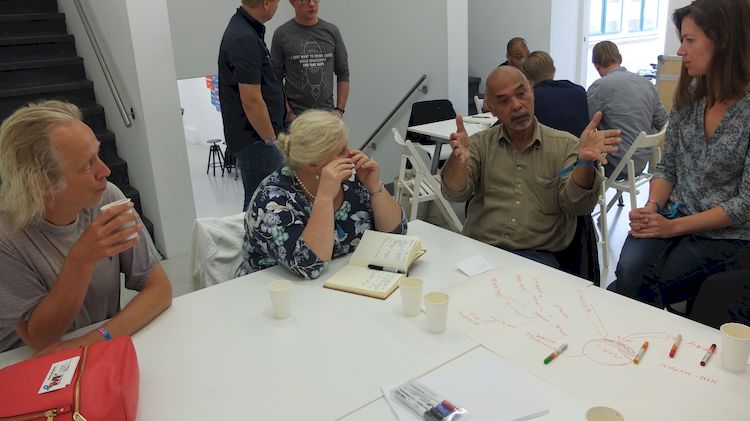
The festival opened with the labs on June 28. The first lab devoted an entire day to Mars One, the one-way mission to colonize Mars and brainchild of Dutch entrepreneur Bas Lansdorp. It was hosted by Arno Wielders, who divides his time between ESTEC and Mars One. Also participating were Ostap Rudakevych and Masayuki Sono, cofounders of Clouds Architecture Office, researching aerial cities in the Earth’s sky, or around the gaseous planets of Venus, Saturn and Jupiter.
Hydrolander, a probe to land on the moons of Saturn or Jupiter by Clouds Architecture Office (2017):
Biohacking, genome, hormones and reproduction
The two other labs of Border Sessions 2017 were dedicated to the human body facing revolutions in biotechnology. The first lab, led by Open Wetlab’s DIY Human Enhancement Clinic at Waag Society in Amsterdam, discussed artistic creation and ethical debates around the genome editing technology of CRISPR-Cas9, and appropriating gynecological science such as hormonal diets to counter endocrine disruptors.
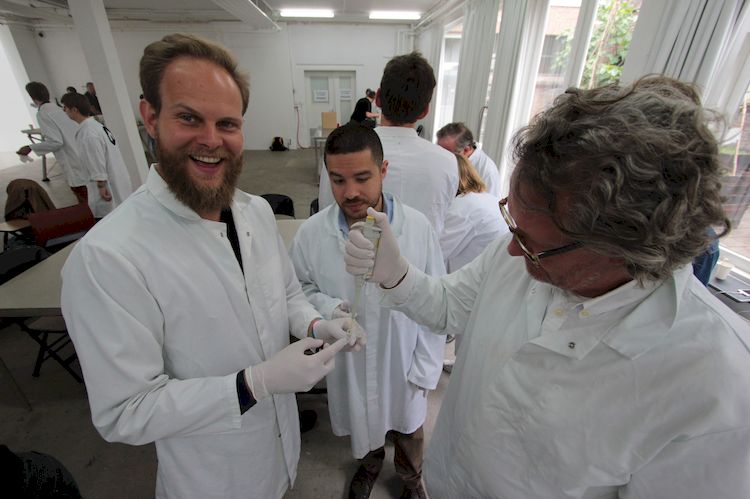
The second lab, entitled “Ectogenesis, Artificial Womb, Human Egg?”, led by designer Hendrik-Jan Grievink, biologist Nana MacLean and artist-designer Charlotte Marabito, both co-authors of the Youterus project, tackled ethical issues raised by the possibility of an external artificial uterus. “How do we navigate in a society, where pregnancy exists detached from the ideal of a fertile female body? What are ethical concerns and problems of this new society?” Youterus speculates “a possible future of total reproductive autonomy”, trying to resolve today “ethical issues which we will have to ask ourselves sooner or later”.
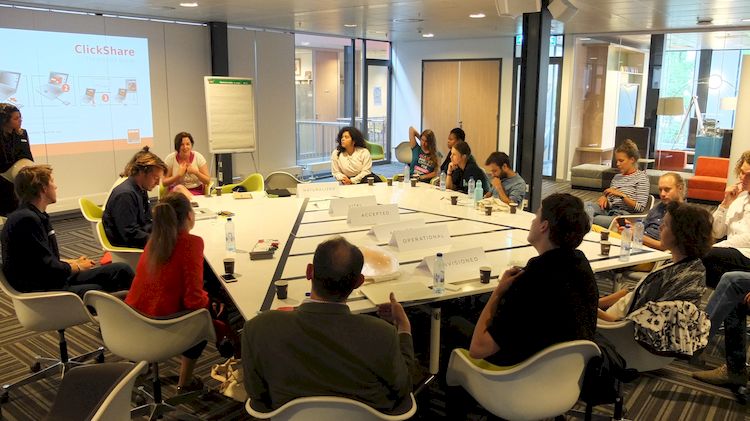
Changing our habitat
On June 29-30, the festival opened to a wider audience with a marathon of discussions, workshops and lectures around five main themes. “Advanced Human Settlements” tackled the question of new modes of urban habitats—such as Regen Villages, an international initiative that went viral in 2016 after its launch at the Venice Architecture Biennale, presenting its first ecovillage under construction in Almere near Amsterdam. A (25-house) prototype of an “off-grid” (not connected to government-run infrastructures) and resilient neighborhood that self-manages its own water, waste and energy production. The houses are not yet accessible to all.
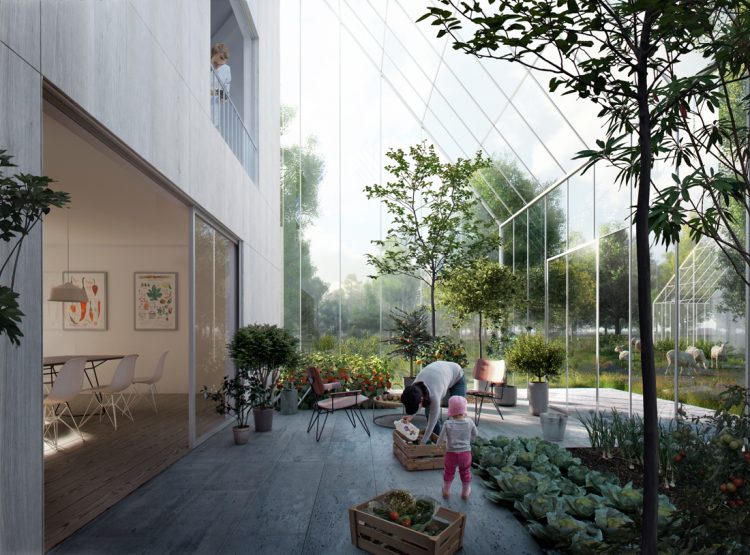
This theme also spotlighted Gather, a Dutch ecosystem of designers, artists, creative artisans and makers who collaborate with social entrepreneurs, experts, students and people in rehabilitation, in order to influence companies and institutions to build an economy based on collaboration and sharing.
Transhumanism or science-fiction?
The second main, and very transhumanist, theme of “Darwin+” dealt with modifying and replicating living things, already the focus of day one. A large part of the second day was occupied by a workshop on marine robotics by Ikuo Yamamoto, professor at Nagasaki University and inventor of the first lifelike robotic fish in the form of a red sea bream (Makery visited his biomimetic lab in Japan last year). His now-famous fishbot had swum on board the International Space Station (ISS) in 2009. Since then, Yamamoto has developed more than 16 other fish robots, including dolphins, manta rays, carp and tuna.
Fishbots in action at Ikuo Yamamoto’s Yamamoto Lab:
The third main theme, “Human Nature”, explored what propulses human nature forward, for example with a workshop to better understand the movements of one’s body in relation to smart clothing. The festival also dug deeper into one of its favorite topics, vertical farming and Controlled Environment Agriculture (CEA), or agriculture driven by technology (aquaponics, hydroponics, aquaculture…). Another workshop led by researchers at Delft Technological University near The Hague was on swarms of miniature drones networked to collect data.
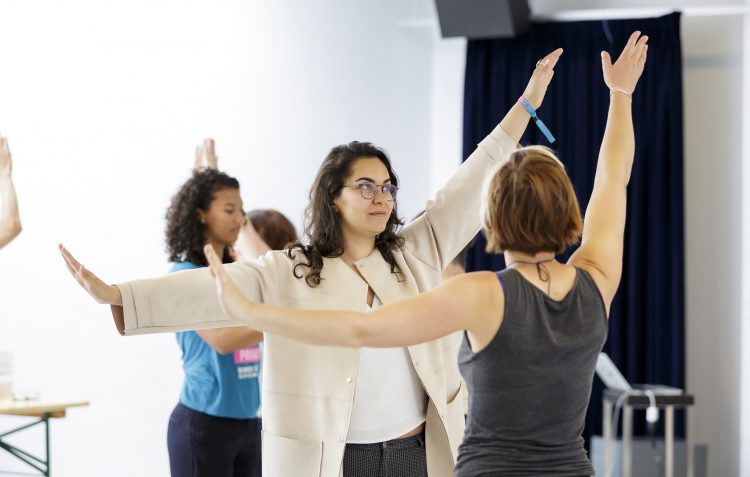
In the series of lectures, two science-fiction writers were invited to talk about how we imagine possible futures. Welsh author Alastair Reynolds, whose novel Revenger takes place ten million years into the future, discussed the intrigue and difficulty of setting a SF story far into the future. Charles Stross, an author from Edimburgh, shared his multiple technological and political scenarios for writing fiction based on historical facts in different circumstances, using his latest novel Empire Games as an example. In it, two parallel stories unfold: one of America under police dictatorship, the other of a United States where a radical revolution falls into the unfortunate footsteps of the ex-Soviet Union. At one point, the two narratives intersect…
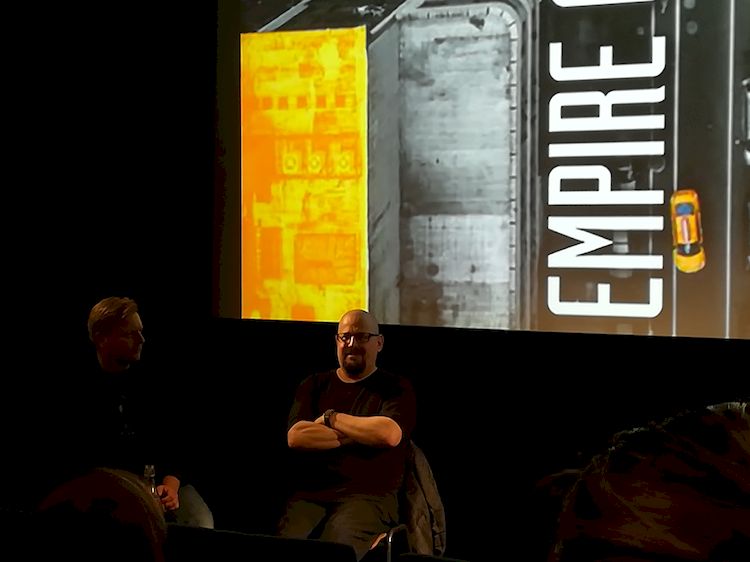
Favorizing ecodesign and the circular economy
The fourth main theme studied “Planetary Boundaries”. Researcher David Peck from Delft Technological University presented scenarios from the circular economy in the context of rarefied raw materials. “There is a great need for regulations to favor ecodesign and changing taxation systems,” he said. The impact of climate change on life on the Spitzberg bases in northern Norway was also discussed, as were reforestation projects of ultra-dense mini-forests by Indian scientist Shubhendu Sharma. In 2015, the botanist from Bangalore planted his first Tiny Forest in the Netherlands (and in Europe), a forest of 600 trees on a surface no bigger than a tennis court.
Revisiting the Tiny Forest experiment in Zaandaamm, the Netherlands:
The last main Border Sessions theme, “Next Society”, discussed the implications of commercializing data, crypto-currencies, as well as distributed fabrication, to mention only a few technology markets currently in vogue. Abi Bush, consultant for Field Ready, described the operations of this NGO in Nepal following the big earthquake in 2015, and how to make NGOs, makerspaces and the industry collaborate to the best advantage of local fabrication in reconstruction. She did not hide the fact that distributed fabrication maintains inequalities between actors in the field. Privacy designer Tijmen Schep demonstrated how commercializing data pushes users to conform, while artist Manuel Beltrán explained how to mine for bitcoin using nothing but your own body heat—one of the projects of the Institute of Human Obsolescence.
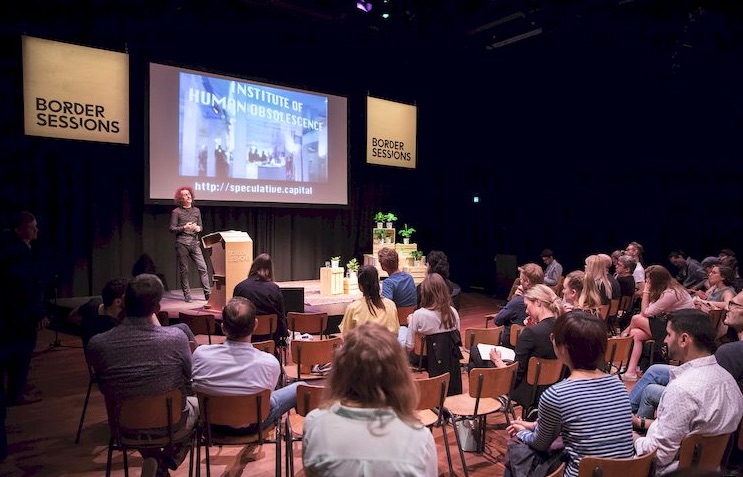
Make those who sell data pay?
Manuel Beltrán also suggested taxing big companies that commercialize data from Internet surfing with a universal revenue. It’s a seductive idea that counterbalances the capitalism of rents described by Peter Frase from the American leftist magazine Jacobin, which closed the festival. According to Frase, a society that sells data but increases the number of subscriptions (to an Internet provider, to a mobile operator, to Amazon, etc.) builds a system that enslaves the least wealthy classes through rents. In his book Four Futures, Life after Capitalism, Frase analyzes four possible futures of our technological societies faced with transformations in the workspace, increasing automation and climate change: a “socialist” future based on the idea of universal revenue, a “communist” future of abundant resources, a future based on “capitalism of rents” and a future of “exterminism” that could not care less about the disastrous consequences of global warming for the poorest among us, seeking only to protect the most privileged, with almost criminal cynicism (we’ll be back soon with a longer interview with Peter Frase).
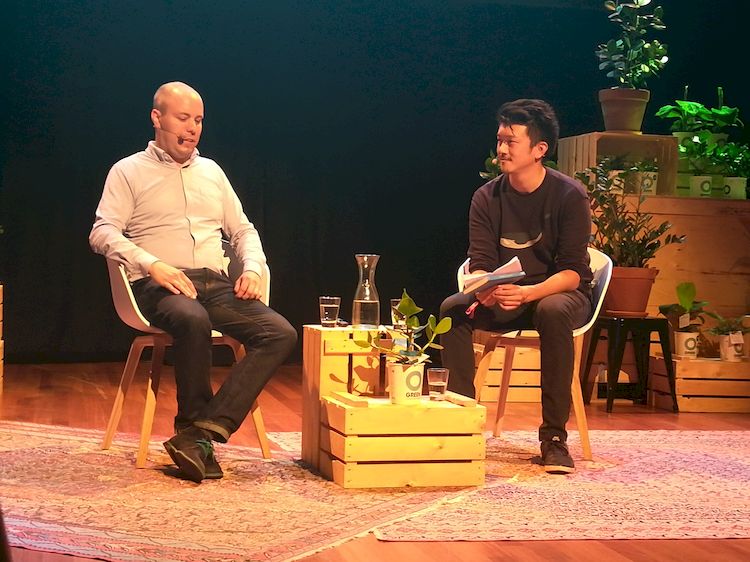
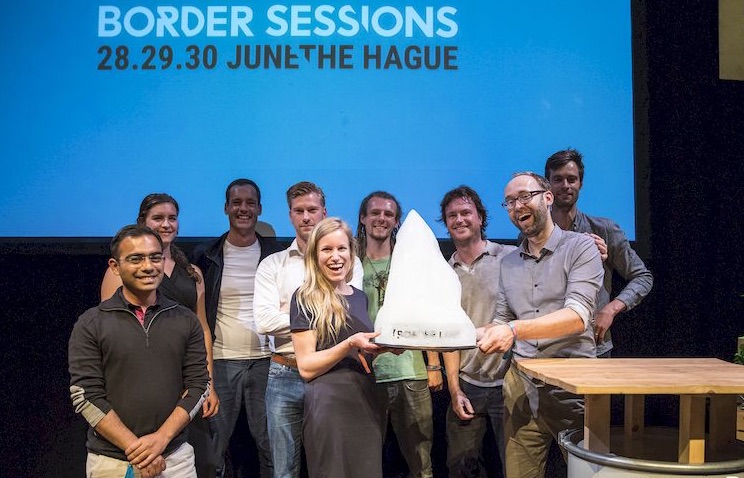
Closing this well-padded festival was the Border Awards ceremony. The big winner was Ermi van Oers for her Living Light, a plant-lamp inspired by microbial batteries, which sources its energy from the electrons emitted by bacteria in the soil during the plant’s photosynthesis process.
Presentation of Living Light by Ermi van Oers:
Border Sessions and Border Labs websites
